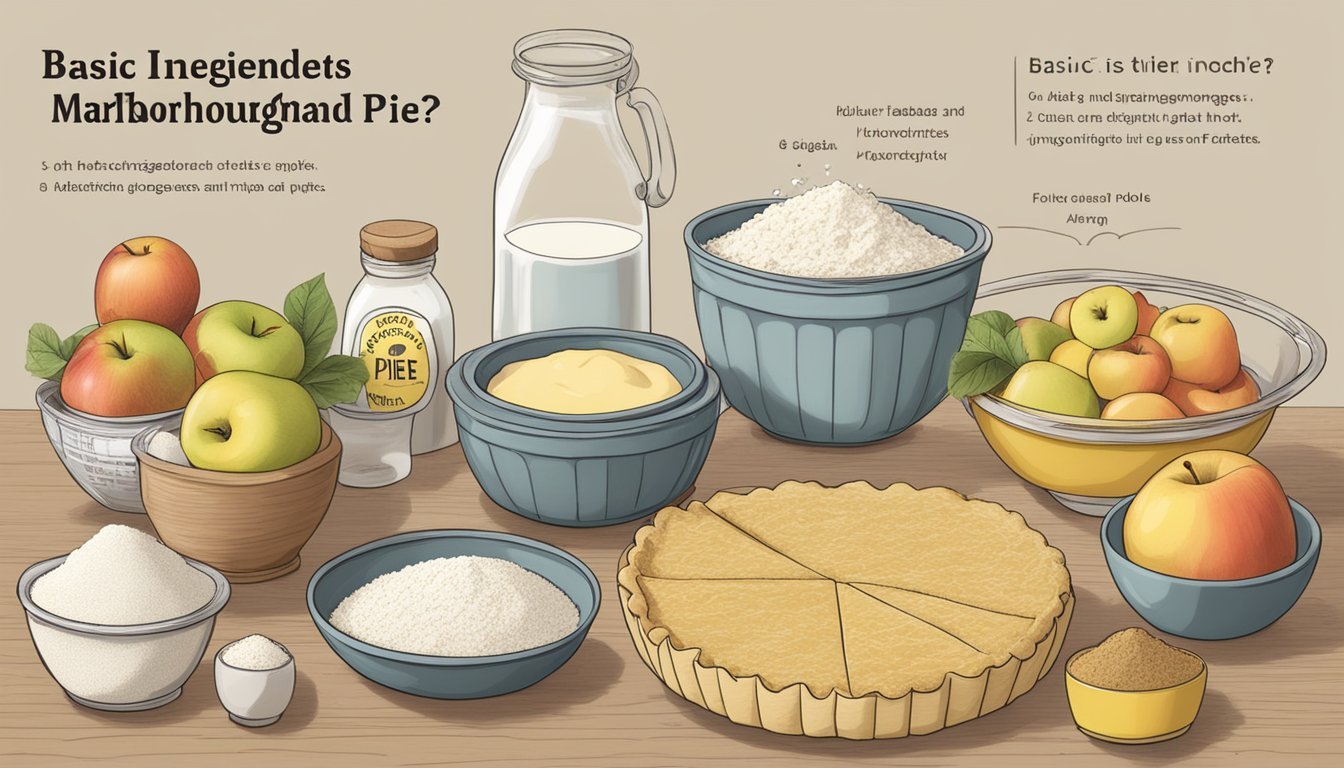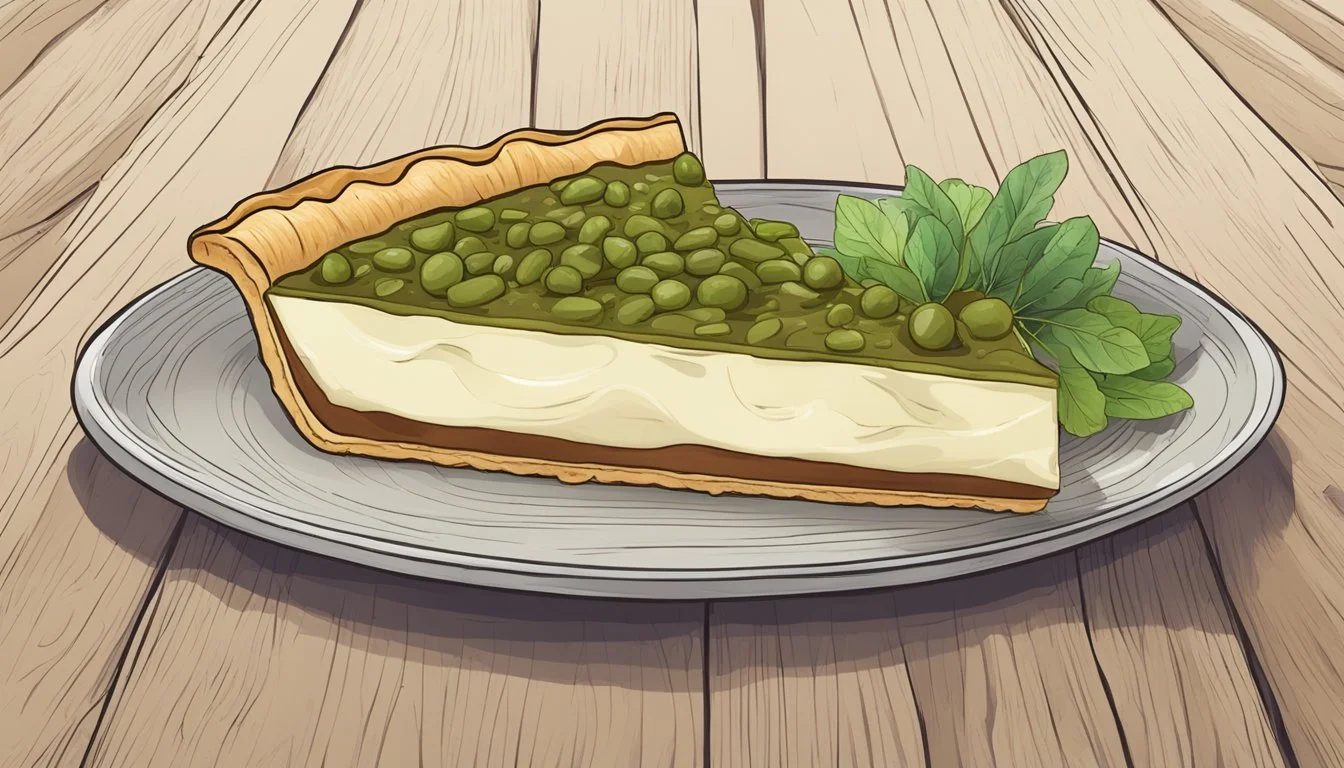Is Marlborough Pie Vegan?
Understanding Traditional Ingredients and Alternatives
Marlborough pie is a traditional dessert that traces its origins back to the New England region of the United States, with earlier roots possibly stemming from England. As a classic dish, it embodies the rich culinary heritage of the area and reflects the local flavors and ingredients cherished during the 19th century. The dessert typically features a custard filling made with apples, eggs, cream, and spices such as nutmeg or cinnamon, which is then encased within a single pie crust. It's a unique variation that distinguishes itself from other apple-based pies through its custard-like consistency and flavor profile.
Historically, the pie has not been a vegan-friendly option, as it includes several ingredients that are animal-derived, such as butter, eggs, and cream. These components are fundamental to creating the creamy texture and rich taste that Marlborough pie is known for. For those adhering to a vegan diet, this would exclude the traditional version of the dessert from their dietary choices without appropriate substitutions.
For Marlborough pie to be vegan, it would require a complete revision of the recipe, replacing the butter, eggs, and cream with plant-based alternatives that do not compromise the pie's distinctive taste and texture. While vegan baking has come a long way in offering alternatives that mimic the properties of these ingredients, the challenge lies in maintaining the authenticity of the Marlborough pie's flavor that makes it such a cherished New England dessert.
Origins and Historical Significance
Marlborough pie has a rich history extending from its English roots to its adaptation in New England, with significant cultural impact reflected in traditional American literature and cookbooks.
Early English Roots
The Marlborough pie initially emerged from England, with historic ties to the apple custard pies of the early centuries. The dessert was commonly infused with apples and spices, drawing upon the abundant orchards and culinary customs of the region.
Adaptation in New England
Upon its arrival in New England, the Marlborough pie underwent modifications, incorporating local ingredients and American sensibilities. Notably, Amelia Simmons' American Cookery, often cited as the first American cookbook, featured recipes akin to the Marlborough pie, exemplifying the blend of old-world tradition with new-world innovation.
Cultural Impact
The prominence of Marlborough pie in American culture was captured by authors like Harriet Beecher Stowe in her novel Oldtown Folks, cementing the pie's role as a traditional American dessert. It stood as a culinary symbol of New England heritage and was integral to festive occasions, linking food with social and cultural identity.
Basic Ingredients and Their Roles
In the process of understanding whether Marlborough pie is vegan, examining its basic ingredients is crucial. Each component serves a functional role in achieving the pie’s signature taste and texture.
Fruit Components
Apples: The star of the pie, apples are shredded to contribute to the pie's texture and flavor. They are generally cooked until tender before being added to the custard filling.
Lemon: Occasionally, lemon juice or zest can be used to enhance the fruity flavor and provide a balance to the sweetness.
Sweeteners and Flavor Enhancers
Sugar: Typically granulated sugar is used to sweeten the pie filling and complement the tartness of the apples.
Spices: A blend of spices such as cinnamon or mace adds depth and warmth to the pie.
Binding Agents
Eggs: Eggs are crucial as they help bind the ingredients together to form a custard, which sets upon baking.
Cream: Cream adds richness and helps create a smooth and creamy custard consistency within the pie.
Pastry Foundation
Pie Crust: Made from flour, butter, ice cold water, and salt, the crust provides a flaky and buttery foundation for the pie.
Butter: Integral to both the crust and the filling, butter adds flavor and contributes to the texture of the pie. Vegan alternatives can be used to adapt the recipe.
Note that while typical Marlborough pie includes dairy products such as butter and cream, these can be substituted with plant-based alternatives to make a vegan version.
Vegan Considerations
When adapting a Marlborough pie to meet vegan dietary needs, careful attention must be given to substituting key ingredients traditionally derived from animal sources. The classic recipe often includes elements like butter, cream, eggs, and pastry, which can be replaced with plant-based alternatives.
Ingredient Substitutions
For the traditional components of a Marlborough pie, which commonly include butter and custard, plant-based substitutes are available and can provide similar results in taste and texture.
Butter: One can use unsalted vegan butter or margarine as a direct replacement. These alternatives can usually be used in the same quantities.
Cream: Plant-based creams made from soy, oats, or almonds are suitable substitutes.
Custard: A combination of non-dairy milk, cornstarch, and plant-based sweeteners can replace traditional custard elements.
Eggs: For binding, consider using options like flaxseed meal or chia seeds mixed with water, known as "flax eggs" or "chia eggs."
Pastry: Ensure that the pastry does not contain dairy or eggs. Instead, look for or make pastry using ingredients such as vegetable oils.
Dietary Restrictions Impact
Those adhering to vegan eating habits avoid all animal products, including dairy and eggs, which are central to many pie recipes.
Dairy: Unsweetened versions of plant milks and oils can be used instead of milk or unsalted butter.
Eggs: They are commonly used in pie fillings, but can be replaced with aforementioned vegan binders.
It is crucial to acknowledge that cross-contamination can be a concern in establishments that are not exclusively vegan, where shared fryers and grills are common. Individuals following a vegan diet strictly should verify the cooking environment to ensure it aligns with their dietary choices.
Culinary Techniques and Preparation
In the preparation of Marlborough pie, meticulous attention to the pie base construction, filling composition, and baking methodology are essential to achieving the traditional texture and flavor.
Constructing the Pie Base
The baker begins by rolling out a dough disc on a floured surface into a 10-inch circle, maintaining an approximate thickness of 1/8 inch. This flat dough is then placed into a 9-inch pie plate, with care taken to press the dough evenly along the sides to form a consistent base.
Preparing the Filling
For the filling, shredded apples are usually cooked with sugar and butter until tender. Once cooled, eggs, cream, and spices are blended into the apple mixture to form a custard filling. Notably, the inclusion of egg yolks and melted butter contributes to the lush and velvety consistency of the filling.
Baking Methodology
The filled pie is then subjected to baking, typically in a preheated oven set to 400°F. The precise baking time is imperative, as it allows the custard filling to set and the pie base to attain a golden-brown hue.
Variations and Modern Interpretations
Although traditional Marlborough pie is not vegan due to its dairy and egg components, numerous variations and modern adaptations cater to diverse dietary preferences, including veganism.
Regional Adaptations
Adaptations of Marlborough pie reflect regional apple varieties and tastes. In New England, where the pie retains a nostalgic presence, Granny Smith and Northern Spy apples are common choices for their firm textures and balance of tartness and sweetness. On the other hand, some versions of the pie might incorporate Pink Lady apples for their distinctive tart flavor and firmness that can withstand baking. Whether the choice is a tart apple like the Granny Smith for a sharp flavor, or a sweet apple for a more mellow taste, regional variations emphasize local apple varieties and historic preferences.
Contemporary Twists
Contemporary versions of Marlborough pie often introduce vegan substitutes to reinvent the classic. For instance:
Light cream can be replaced with plant-based alternatives such as almond or coconut cream.
Eggs, essential for the custard, might be substituted with a mixture of ground flaxseed and water or commercial egg replacers.
Modern interpretations may also experiment with the spice profile or add new elements to enhance the flavor and texture, while still respecting the essence of the traditional recipe. It's not uncommon to find Marlborough pies that have been augmented with a crumble topping or a lattice crust in an effort to marry the old with the new.
Presentation and Serving Suggestions
When presenting Marlborough Pie, one should consider both the traditional aspects of the dish and any dietary adaptations, such as a vegan variant. The aesthetic appeal and taste experience are significantly enhanced by the selection of appropriate beverages and careful attention to portioning and plating.
Accompanying Beverages
For traditional servings: A sweet sherry or a dessert wine complements the rich flavors of Marlborough Pie, especially during Thanksgiving celebrations.
For vegan adaptations: Consider pairing with organic, sulfate-free wines or spiced apple cider to maintain the vegan integrity of the dish.
Portioning and Plating
Serving Size: Typically, the yield of a Marlborough Pie recipe is for one 8-inch deep dish pie, which should be portioned into slices that satisfy without overwhelming.
Presentation: For a vegan Marlborough Pie, one might forgo the classic meringue topping. Instead, use a dusting of ground cinnamon or a dollop of vegan whipped cream to garnish each serving for visual and taste contrast.
Nutritional Information and Health Considerations
The classic Marlborough pie contains several ingredients that are rich in nutrients but also dense in calories. It is not inherently vegan due to the presence of butter, cream, and eggs. Below, the subsections delve into the caloric content and considerations for those with allergies or intolerances.
Caloric Content Analysis
Marlborough pie, traditionally prepared with butter, cream, and eggs, exhibits a high caloric density. The use of these ingredients contributes significantly to the total caloric count of the pie. Here is a rough breakdown of the caloric content from the main non-vegan ingredients:
Butter: A typical slice of Marlborough pie may contain up to a tablespoon (14g) of butter, amounting to approximately 100 calories.
Cream: If cream is included, a slice might have about two tablespoons (30ml), equalling roughly 52 calories.
Eggs: Each egg introduces about 70 calories, and an average recipe may call for 2 eggs per pie.
Overall, these components significantly impact the total calorie content of Marlborough pie.
Allergy and Intolerance Guidance
Individuals with specific dietary restrictions need to be aware of the traditional Marlborough pie's ingredients. The key allergens to consider include:
Eggs: A common allergen, eggs can trigger reactions ranging from mild to severe in sensitive individuals.
Dairy: Ingredients like butter and cream can cause adverse effects for those with lactose intolerance or a milk allergy.
Adaptations using plant-based alternatives exist, but careful consideration of the chosen substitutes is essential to manage caloric intake and potential allergens.









